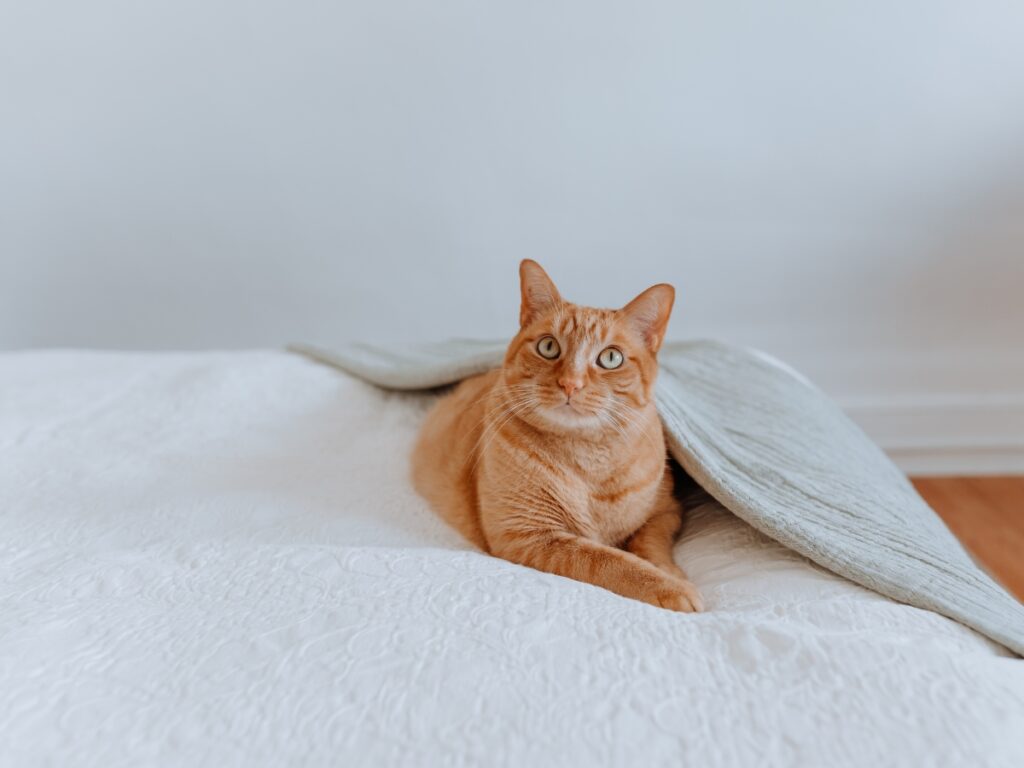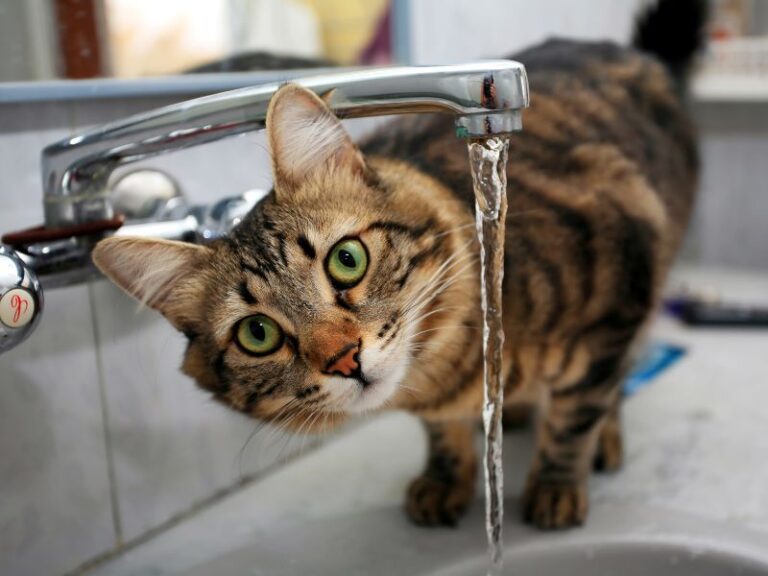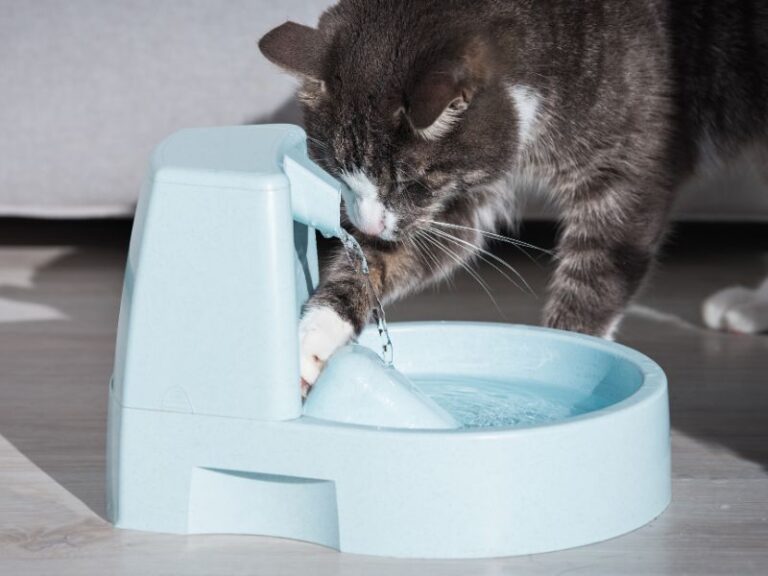Table of Contents
ToggleWelcoming a cat into your home is like inviting a burst of energy and curiosity. From chasing imaginary prey to perching on the highest shelf, they possess an uncanny ability to fill every corner with their unique presence. However, as much as they enjoy playtime, they’re also creatures of comfort, seeking out cozy spots for much-needed rest. This brings us to the intriguing world of training your cat to sleep in its own bed – a journey that’s as much about understanding its innate behaviors as it is about fostering a sense of security and routine.
In this guide, we’ll explore the art of training your feline friend to embrace the comfort of a dedicated sleeping space. From understanding their sleep patterns to creating positive associations with a cat bed, we’ll cover a range of techniques designed to make the transition smoother for both you and your furry companion. So, whether you’re a new cat owner or seeking ways to improve your cat’s sleep habits, get ready to embark on a journey that celebrates the beauty of cat sleep and the joy of sharing your home with a contented feline.
Let’s dive in and uncover the secrets to training your cat to sleep soundly in its own bed.
Understanding Your Cat’s Sleep Habits
Before delving into the art of training your cat to sleep in its own bed, it’s essential to unravel the enigmatic world of cat sleep patterns. Unlike humans, who enjoy long stretches of continuous slumber, cats dance to a different rhythm, alternating between bursts of activity and deep sleep phases. This unique pattern is a remnant of their wild ancestors’ need to stay alert to potential threats.
Unveiling Cat Sleep Patterns
Cats experience two primary sleep phases: rapid eye movement (REM) sleep and non-REM sleep. REM sleep is characterized by bursts of brain activity, twitching whiskers, and occasional movements of the paws, often giving the impression that your cat is chasing something fantastical in its dreams. These short bursts of REM sleep are followed by longer periods of non-REM sleep, where your cat experiences deeper, more restful slumber.
This distinctive sleep cycle is a reflection of their primal instincts – moments of burstiness when they’re at their most active, interspersed with times of profound calmness.
Understanding these sleep patterns is crucial as it lays the foundation for successful training. By acknowledging and respecting their natural tendencies, you’ll be better equipped to create a sleep environment that complements their inherent behaviors.
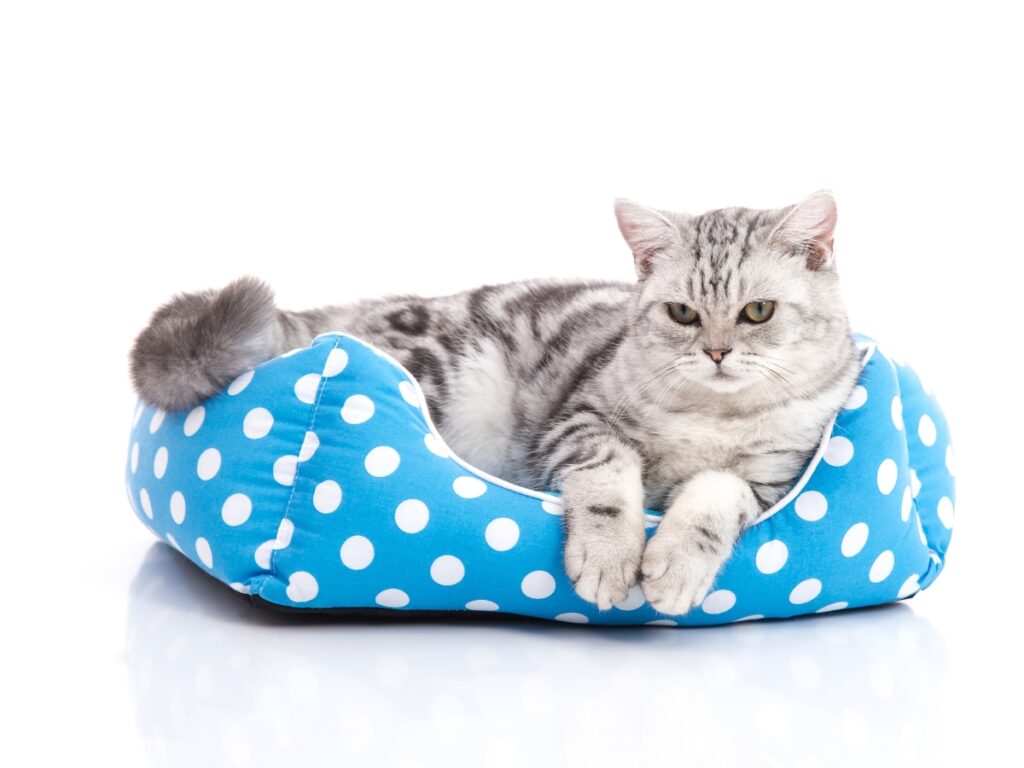
The Importance of a Cat Bed
Imagine if you had to switch between different sleeping spots every night – a different couch, a new chair, or even the floor. It’s safe to say you’d find it challenging to enjoy a restful night’s sleep. Similarly, for your feline friend, having a designated sleeping space isn’t just a luxury; it’s a fundamental need that contributes to their overall well-being.
Why Your Cat Needs Its Own Bed
Cats are territorial creatures by nature. Providing them with a dedicated cat bed not only offers physical comfort but also caters to their psychological need for a safe and familiar space. When your cat has a designated bed, it becomes a sanctuary where they can unwind, feel secure, and engage in the natural behaviors they’re hardwired for.
A cat bed also plays a significant role in maintaining your cat’s health. As they age, cats may develop joint issues or arthritis. A well-designed bed with proper cushioning can alleviate discomfort and provide relief for weary joints, enhancing their quality of sleep.
By choosing the right cat bed and placing it strategically within your home, you create a haven that aligns with their innate instincts and provides a secure haven for both bursts of activity and moments of restful slumber.
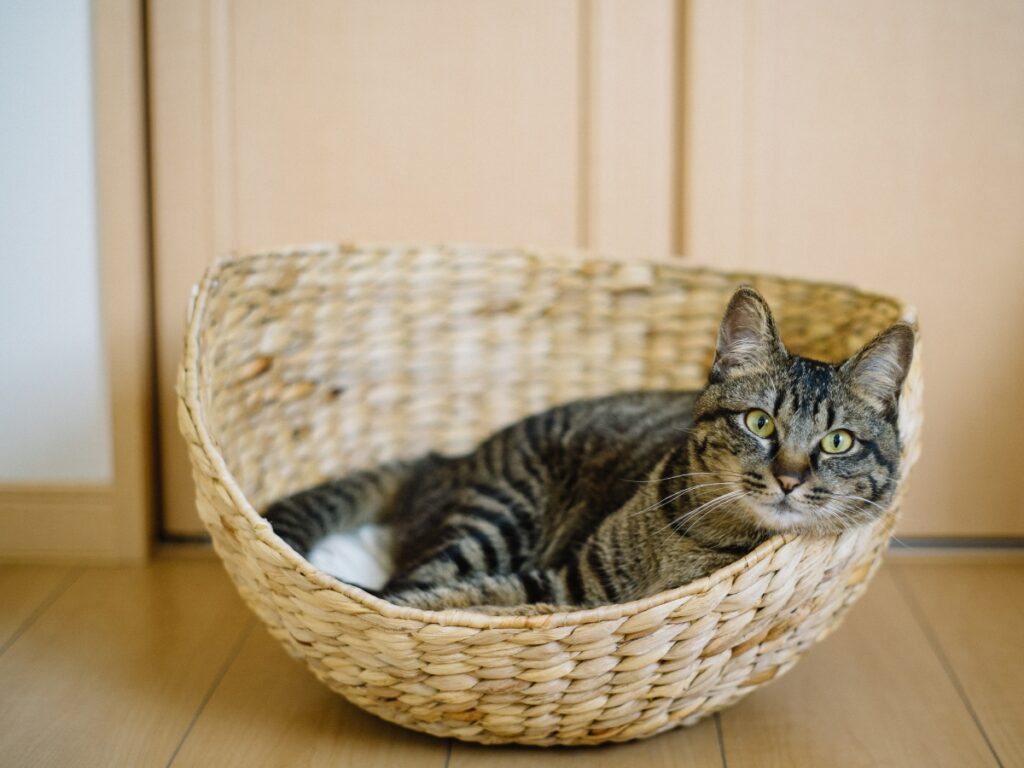
Choosing the Right Cat Bed
Just as each cat has its own unique personality, their preferences for comfort vary too. When it comes to selecting the perfect cat bed, it’s essential to consider factors that align with your feline friend’s individual needs and behaviors.
Picking the Perfect Bed for Your Feline
Cat Beds come in a variety of shapes and styles, each catering to different sleep preferences. Some cats prefer the security of an enclosed bed with high sides, mimicking the feeling of a hidden den. Others enjoy the freedom of an open bed that allows them to stretch out luxuriously. Observe your cat’s habits – do they tend to curl up in corners or sprawl out in open spaces? This observation will guide you toward a bed that complements their natural sleep positions.
Furthermore, consider your cat’s age and size when selecting a bed. Kittens may prefer a smaller, cozy bed, while larger cats might require a spacious option that accommodates their growth.
Incorporating the Right Materials
The materials used in a cat bed play a significant role in providing the comfort and durability your cat deserves. Opt for beds made from soft and plush materials that offer a cozy surface for your cat to curl up on. Look for hypoallergenic options, especially if your cat is prone to allergies. Additionally, choose a bed with removable and machine-washable covers. Cats can be finicky about cleanliness, and being able to regularly clean their bed ensures their sleeping space remains inviting.
Lastly, consider temperature-regulating materials. Some beds come with built-in heating elements that mimic the warmth of a mother cat, offering a soothing environment for your cat’s slumber.
By investing time in selecting the right cat bed, you’re laying the foundation for successful training and fostering an environment where your cat’s unique sleep patterns can flourish.
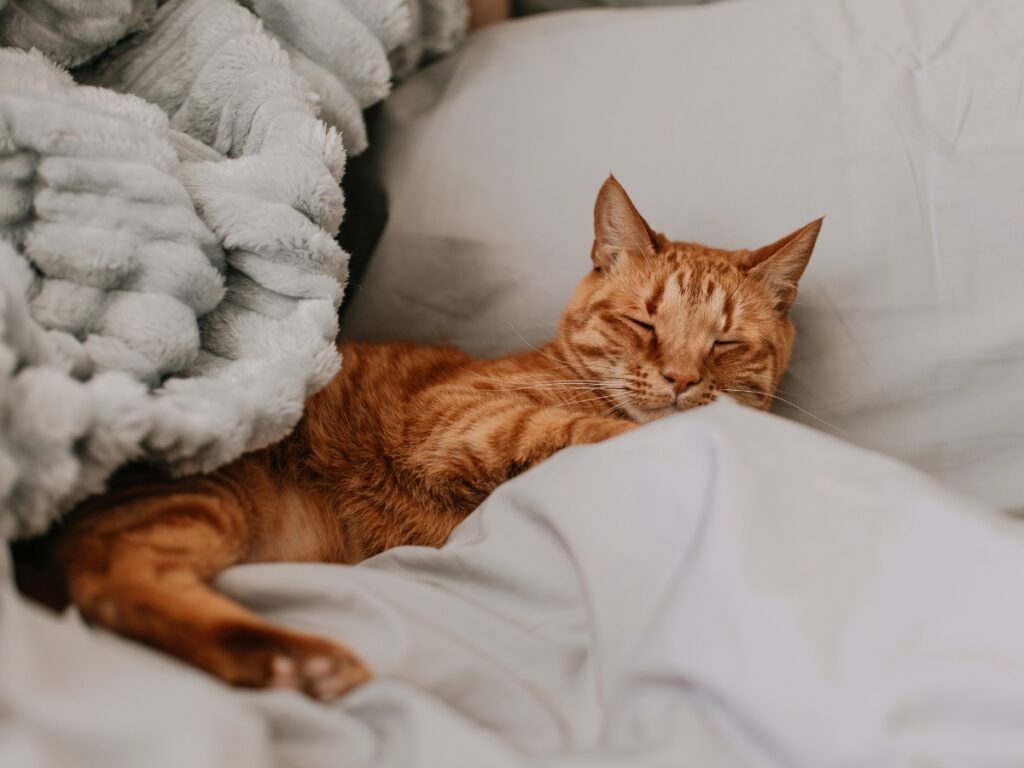
Creating Positive Associations
Now that you’ve chosen the perfect cat bed, it’s time to embark on the journey of introducing it to your feline friend in a way that fosters positive associations and encourages them to embrace their new sleeping space.
Introducing the Cat Bed Gradually
Cats can be naturally cautious about changes in their environment. To help them adjust to their new bed, start by placing it in a familiar and quiet area. Allow your cat to explore the bed at their own pace, giving them the opportunity to sniff, paw, and investigate. If your cat has a favorite blanket or toy, consider placing it on the bed to infuse the space with comforting scents.
Encouraging Play Near the Bed
Associating positive experiences with the bed is key to making it an attractive sleeping spot. Engage your cat in play sessions near the bed, using interactive toys and treats to create an enjoyable environment. Gradually, your cat will begin to associate the bed with moments of fun and excitement, making it a more inviting place to rest.
Be patient during this process. Cats are creatures of routine, and adapting to a new space takes time. Avoid rushing the introduction, as this might lead to your cat feeling stressed or reluctant to approach the bed.
In the following sections, we’ll outline specific training steps to help your cat become more comfortable with the bed and establish it as a safe haven for sleep.
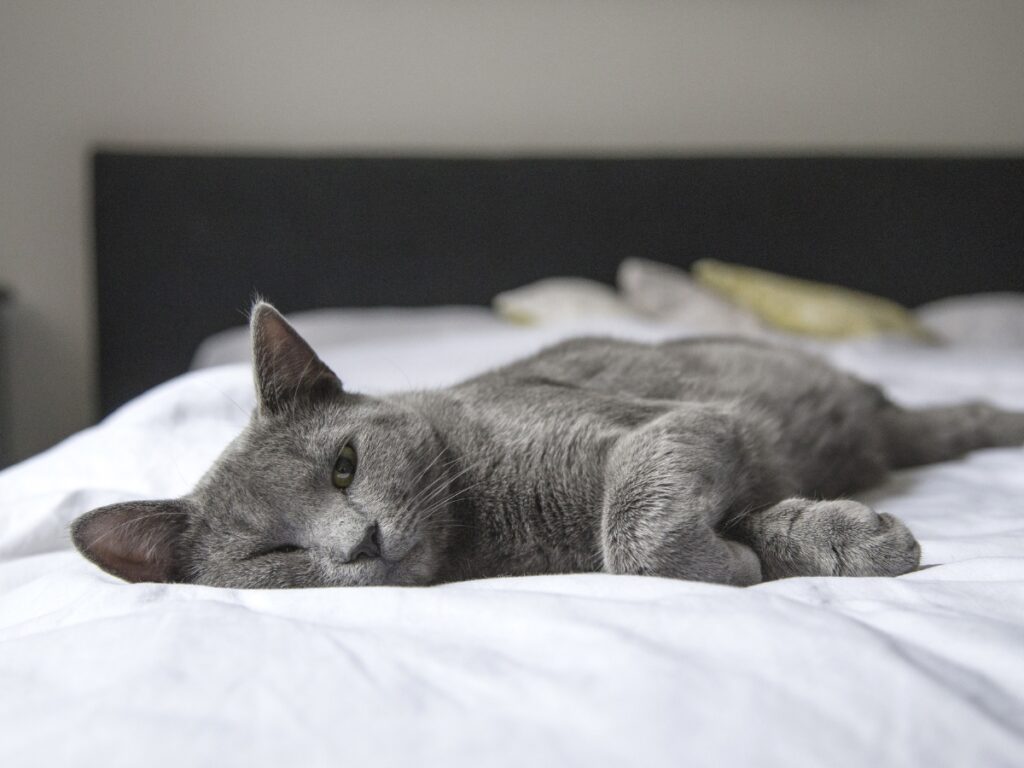
Training Steps
Training your cat to sleep in its own bed involves a combination of patience, positive reinforcement, and understanding. By following these steps, you’ll create a seamless transition that encourages your cat to embrace their designated sleeping space.
Establishing the Bed as a Safe Haven
- Gradual Introduction: Continue allowing your cat to explore the bed on their terms. Avoid forcing them to interact with it; instead, let them approach it naturally.
- Positive Reinforcement: Whenever your cat shows interest in the bed, reward them with treats or gentle praise. This reinforces the idea that the bed is a positive and rewarding space.
- Familiar Scents: Place familiar items like your cat’s blanket or toys on the bed to infuse them with comforting scents. This helps your cat feel more at ease and comfortable.
Guiding Your Cat to the Bed
- Use Treats: Place treats on the bed to entice your cat to approach and explore. Gradually move the treats closer to the bed’s center to encourage them to spend more time there.
- Gentle Guidance: Gently guide your cat onto the bed using treats or a favorite toy. Be patient and use positive reinforcement to create a stress-free experience.
- Consistency is Key: Repeat these steps daily, gradually increasing the time your cat spends in bed. Over time, they’ll associate the bed with positive experiences and comfort.
Remember, every cat is unique, and their progress will vary. Some cats may take to their new bed quickly, while others may require more time to adjust. Celebrate small victories and be patient throughout the training process.
Troubleshooting and Overcoming Challenges
Training your cat to sleep in its own bed is a rewarding endeavor, but it’s not without its share of challenges. Here, we’ll address common obstacles that might arise during the training process and offer strategies to overcome them.
Addressing Reluctance
- Slow Progress: If your cat seems hesitant to use the bed, don’t be discouraged. It’s normal for some cats to take time to adjust. Continue with positive reinforcement and patience.
- Exploring Preferences: Pay attention to your cat’s preferences. They might prefer a specific type of bed or a different location. Experiment and adapt to their needs.
Reinforcing Good Behavior
- Consistent Reward: Continue to reward your cat when they use the bed. This positive reinforcement strengthens the connection between the bed and positive experiences.
- Varying Rewards: Experiment with different types of rewards – treats, gentle petting, or playtime. Find what resonates most with your cat and use it as motivation.
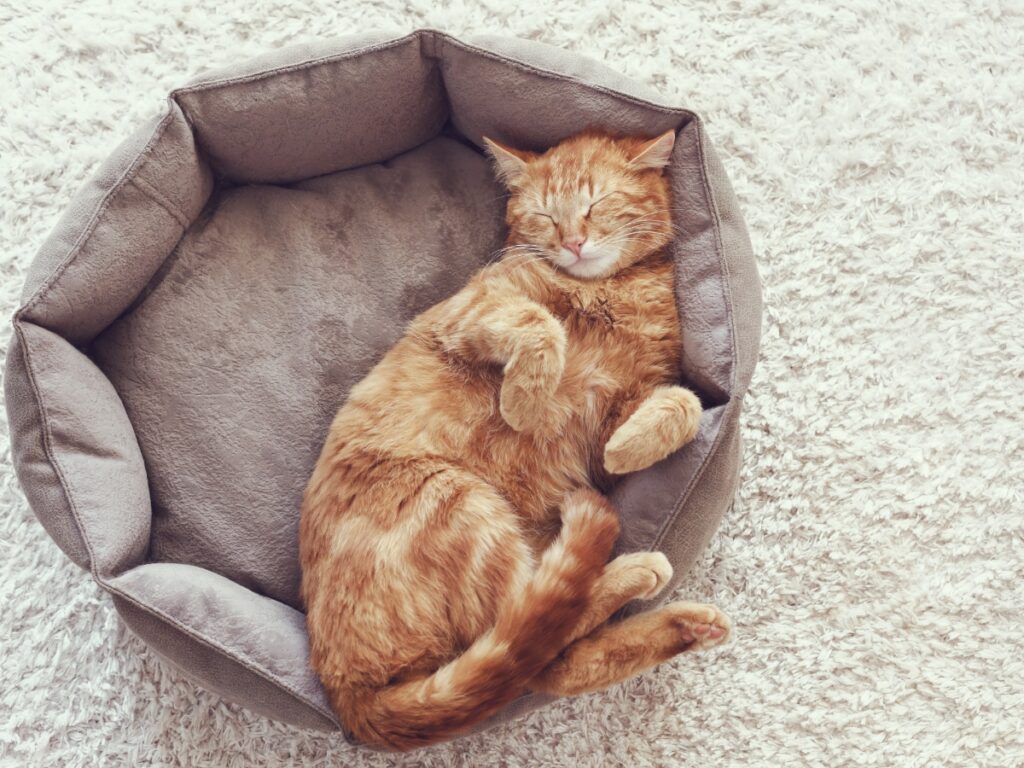
Final Words
Training your cat to sleep in its own bed is a journey that embraces both their bursts of activity and moments of tranquility. By understanding their unique sleep patterns and providing a designated bed, you’re fostering comfort and a sense of security.
From introducing the bed gradually to creating positive associations, you’ve embarked on a path that strengthens your bond with your feline friend. Remember, patience is key as you navigate challenges and celebrate milestones.
Ultimately, you’re crafting a haven where your cat’s bursts of energy and peaceful slumber coexist. So, as your cat cozies up in their bed, relish the satisfaction of creating a warm and inviting sanctuary tailored just for them.
Thank you for joining us on this rewarding journey of cat sleep and bed training.

